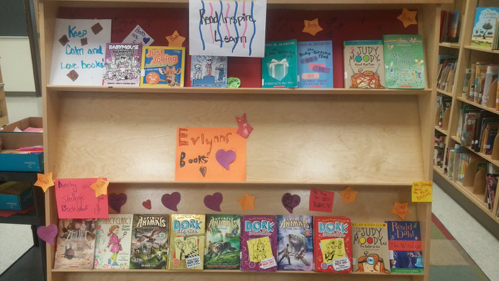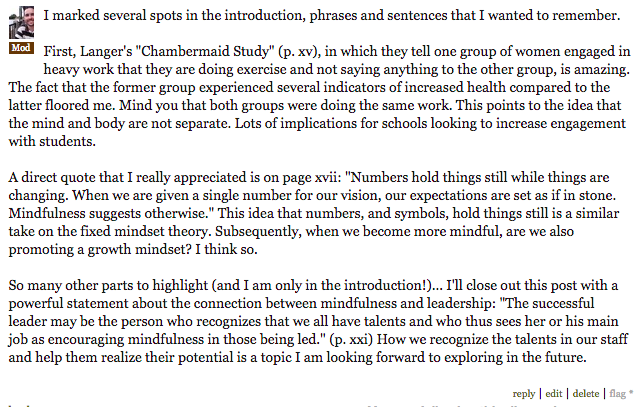The other morning my five-year-old opened his eyes and his first words of the day were, “I loved reading books with you and daddy last night mama”. His words filled my parent and teaching heart to the brim. Words fuel me in all forms – long books, short stories, poems that make me gasp or laugh, and blogs that challenge what I thought I knew. The greatest joy in reading for me is discovering another reader, online or in person, who feels the same way.
When I’m reading I fall into a private space, but when it’s a really good read, I immediately search for a social space where I can talk with someone else about what I’m reading. As a teacher, this lived in my classroom and hallway conversations and now as a literacy specialist, it lives in my work across schools with administrators and teachers. Regie Routman challenges us, “as conscientious educators to instill a love of reading in our students and to do whatever it takes to turn them into readers” (2014, p. 117). For my first post, I wanted to talk about what we do to intentionally create a joyful reading culture.
Through talking about texts that move us, disrupt us, and transform us, we share who we are and lay our reading identities bare. We express our reading identities through what we read, where we read, when we read, and how we talk about reading (Buehl, 2011, p.1). There are friends I can share research articles with, friends who love picture books as much as I do, and friends who mirror back their love of reading with late night texts demanding, “You just HAVE to read this book!”. As I move among schools working with staff in support of literacy, I get the unbelievable opportunity to share and grow reading identities with both students and staff.
I believe administrators and teachers play an important part of a creating a larger reading landscape in students’ lives. In my work developing and supporting our K-12 literacy strategy, I’ve noticed there are some strategic ways administrators and teachers are building a school-wide reading culture. When we intentionally create reading spaces, readers are born and thrive.
The following are three ways to approach building a school-wide culture of reading that caught my attention recently:
Administrators and teachers sharing their own reading lives
It could be a bookshelf that draws your eyes in your Principal’s office, a teacher sharing a professional read or picture book at a staff meeting, or an Assistant Principal popping in for an impromptu read aloud in a classroom. When administrators make time to share their reading joy, others will follow and the joy of reading grows.
Students inviting others into their reading lives

It might be a single bookshelf that students adopt for a week in the learning commons or digital book talks accessed through hallway QR codes. When students have the space to talk about their personal reading, they joyfully embrace it. Offering students dedicated ways to share the texts they enjoy builds their autonomy and engagement and acknowledges the social nature of literacy itself.
Administrators, teachers, and students talking together about books
My husband’s school hosts an annual ‘Battle of the Books’ where teams of readers choose a collection to read and battle over. Many teachers in our board used the hype of March Madness to bring a themed ‘Battle of the Books’ to their classrooms. Literacy experiences such as these bring adults and children together into a shared reading space. Apprenticing students into how we read and how we talk about books provides the gradual release and feelings of joy required to become lifelong readers.


We must intentionally design spaces for students to come to know themselves and others as readers and participate in a joyful literacy community. It is not enough to teach students to read, we must open the door to all of the joys and opportunities of citizenship that reading acts as the gateway for.
What would you add? How do you build a reading culture in your life, your classroom, or in and between schools? Let’s share ideas as fellow readers and build spaces for readers to find their books, their community, and themselves.
References
Buehl, D. (2011). Developing Readers in the Academic Disciplines. Newark, DE: International Reading Association.
Routman, R. (2014). Read, Write, Lead: Breakthrough strategies for schoolwide literacy success. Alexandria, VA: ASCD
This is the first of hopefully many posts from another contributor to this collaborative blog. If you have a passion for literacy and leadership and would like to share your thinking within our space and with our audience, click here for information.







